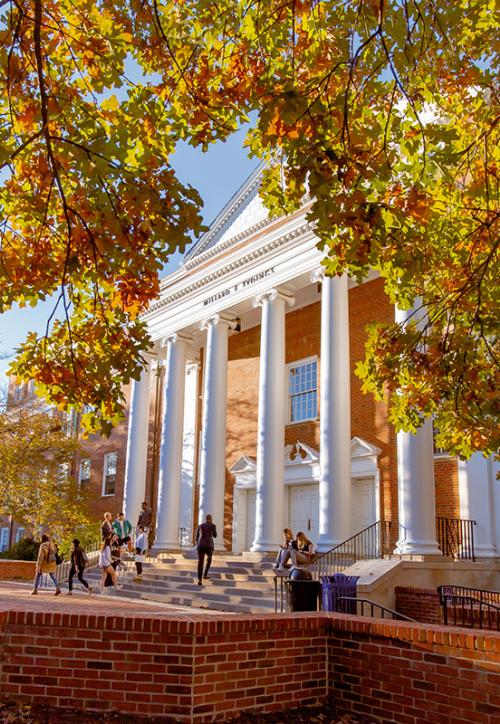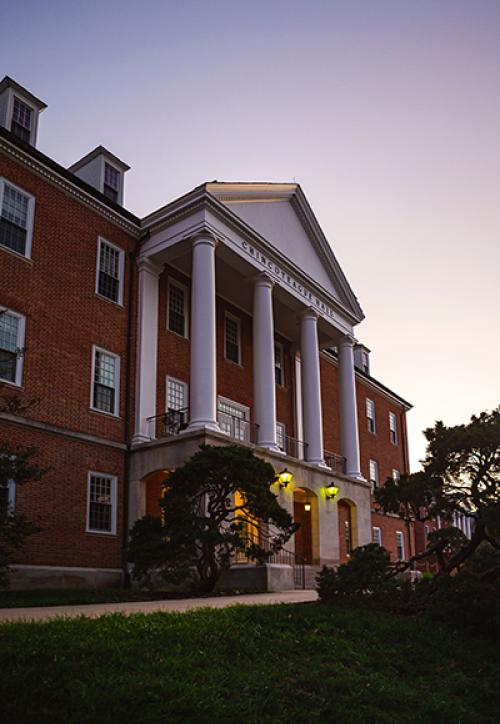Extreme Research: Fires in the Wilderness
The word "fire" often evokes devastation and human suffering. But fire is a natural and frequently necessary component for many ecosystems, particularly in the colder regions of the globe. Understanding wildfires and the effects they have on ecosystems is critical work for researchers in the Department of Geographical Sciences and for their colleagues at NASA. The frequency, patterns and behavior of fires tell us a lot about the environment overall, including key information about the impact of climate change.
The largest fires in the United States occur in remote and inaccessible regions. While satellite and remote sensing technologies have opened up new worlds of fire detection capabilities for researchers, the images and models they produce are only a small part of the big picture. To truly understand how fires affect the environment, researchers must link satellite observations to ecosystem processes through extensive field work, and must turn their observations into usable data.
Associate Professor Tatiana Loboda works extensively with satellites, conducting remote sensing research on boreal forests and tundra biomes—studying fires, biodiversity and climate change. This summer, Loboda worked with GEOG graduate student Dong Chen and Michigan Tech researcher Liza Jenkins in Alaska’s tundra for 16 days to examine the aftermath of frequent fires in this sensitive ecosystem. They measured soil conditions, depth of permafrost and rates of vegetation regrowth within numerous burns in the Noatak National Preserve. This work is part of NASA’s Arctic-Boreal Vulnerability Experiment—AboVE—for which Loboda is the principal investigator and a science team member.
This is Loboda’s fourth field expedition to collect data on tundra ecosystems affected by fire in North America, and the first trip in a series of three under the ABoVE field campaign.
“With the rapid warming of the Arctic, tundra ecosystems and their fire regimes are changing. This summer we collected data that will help us understand fire impacts of permafrost, soils, and vegetation. Fire affects tundra hydrology, its wildlife population, its shrubs and changes overall ecosystem resilience. Most of the fires we examined in Noatak are presumed to be started by lightning and are part of the natural ecosystem functioning in this region. However, we do see an increase in fire in other tundra regions where historically fires have been very rare. That is most likely caused by climate change,” Loboda said.
It wasn’t typical field work. Loboda, Chen and their team traveled well above the tree line, dropped by bush planes into remote tundra locations with no roads. They rafted down the Noatak River for more than 100 miles and bushwhacked over nearly 35 miles of wilderness, checking in with a safety officer once every 24 hours via satellite phone.
Chen, Jenkins and Loboda
with their river guide
The team adhered to strict safety protocols and went through first aid training ahead of the trip, as a rescue helicopter would have taken about 48 hours to arrive, if trouble had occurred.
“These were extremely long field days, particularly as it doesn’t become dark. We were working very hard, bushwhacking and hiking through dense vegetation and over uneven ground,” Loboda said. “It was a ‘lean and mean’ mission. We carried only essential equipment and supplies. After a few days, you got tired of eating the same things.”
The views and the proximity to wildlife—from golden eagles to wolf cubs to grizzlies—made the experience memorable. At one point, the team was followed down the river by a curious bear.
The team moved quickly, studying as many burn scars (areas affected by fires) as possible, doing their sampling and analyses as efficiently as possible. Now, with samples and data in hand, they begin the important work of comparing what they saw on the ground with what the satellite technology is showing from space.
“It’s almost like we were gathering information from a parallel universe; the views are so different on the ground,” Loboda said. “We now are working to link the satellite information and the field data into updated models. We can extrapolate what we learned from limited areas to get a broader sense of larger masses of land. We hope to be able to use these models to replicate and predict when and where fires occur and how they will change the area in the future.”
While the areas under the team’s scrutiny are remote, there is definitely a human element to their important work.
“The impact of climate change is something we are examining very closely. These tundra ecosystems are particularly vulnerable, and are giving us an early look at what might be expected in areas of greater population,” Loboda said. “We are seeing an increase in naturally occurring fires, and other extreme weather phenomena. One of the major fire impacts on the tundra is the removal of lichen, and that is the sole winter-time food source of caribou. So the food chain is affected. We are seeing dramatic changes in hydrology. We are looking for ways to use the information we are finding in the Alaskan tundra to predict what changes might be in store for other tundra regions of the world.”
Loboda and her team have plans to make two more excursions into the field. In 2017, they will study the Seward Peninsula tundra – a region of the largest fire events in the tundra on record since 1950s. There the researchers will study the impact of very large overlapping fire events on long-term ecosystem resilience.
Published on Thu, Nov 17, 2016 - 1:55PM



